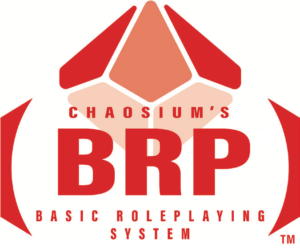Characters in Basic Roleplaying are rated in a variety of ways. The most basic are their characteristics. These are the innate abilities a character has, such as how smart they are, how tough, how charismatic, etc. They are not learned abilities but can sometimes be increased through training and successful use. Normal humans have characteristics ranging from 3 (abysmally low) to 18 (a pinnacle of human potential), averaging at 10 or 11. The higher a characteristic, the more potent the character is in that ability.
The characteristics are: Strength, Constitution, Size, Intelligence, Power, Dexterity, and Appearance, and are described below.
- Strength (STR): Strength is essentially how strong the character is. It doesn’t necessarily mean raw muscle mass, but how effectively the character can exert that muscle to accomplish a strenuous physical feat. Roll 3D6 to determine STR.
- Constitution (CON): Constitution is a measure of how tough and resilient the character is. It helps aid in resisting diseases, but the most significant aspect of CON is determining how much injury a character can suffer before dying. Roll 3D6 to determine CON.
- Size (SIZ): Size is a measure of how large the character is. It doesn’t necessarily translate to raw height—it’s instead a general guide to physical mass. A high SIZ character could be very tall (and thin), or short and thick, or average height and overweight. Roll 2D6+6 to determine SIZ.
- Intelligence (INT): Intelligence is how smart the character is: not necessarily as a measure of how much information the character has memorized, but reasoning power, intellectual acuity, problem-solving ability, and intuition. Roll 2D6+6 to determine INT.
- Power (POW): Power is an almost intangible measure of force of will, personal dynamism, and spiritual energy. A high-POW character is a beacon of energy, lucky, and forceful in presence, while a low one is often ignored or missed, and is frequently unlucky. Roll 3D6 to determine POW.
- Dexterity (DEX): Dexterity is a measure of hand-to-eye coordination, physical speed, and overall agility. DEX determines how quickly a character may act in combat and provides the basis for the Dodge skill. Roll 3D6 to determine DEX.
- Appearance (APP): This is a measure of several aspects, from charisma, grace, and beauty/handsomeness to how appealing the character is to others. A high APP character is noticeable in a crowd because of an intangible combination of charm and presentation. Roll 3D6 to determine APP. (In some versions of these rules, APP is instead Charisma, or CHA.)
If the characteristics aren’t exactly as desired, the player can move up to 3 points from one characteristic to another. For example, if a strong character is preferable to a smart one, move 3 points from INT over to STR. There is no requirement to move the whole 3 points, or any points at all.
The player should examine the set of characteristics and think about what the numbers represent. Are they strong and clumsy? Small and fast? Average? Is the character more of a thinker than a physical sort?
If the numbers just don’t match the type of character desired, the player should ask the gamemaster if it’s all right to start over and roll up a new set of characteristics. This is fine, so long as all of the players have the same opportunity and are happy with their results.
Sections
- 2.1 The Character Sheet
- 2.2 Identity
- 2.4 Characteristic Rolls
- 2.5 Derived Characteristics
- 2.6 Skills
- 2.7 Professions and Professional Skills
- 2.8 Personal Skills
- 2.9 Equipment
- 2.10 Final Touches

